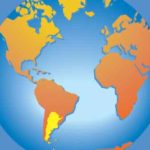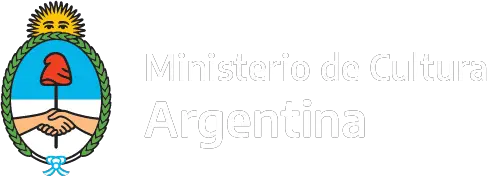The continental integration of Latin American countries, “the great nation” was the dream of the Liberators of the War of Independence of the Spanish empire, as José de San Martín and Simón Bolivar.
Latin American countries started to be emancipated at a time when the great European powers began to apportion the world into different colonies and areas of influence.
The division of Latin America can also derive from European hegemony and the dispute for the New World territories. As a possible consequence of this worldwide process, among the local political and economic projects there was always the thought of uniting the States within the continent, so that a more fluent relationship could be achieved.
OEA
The Organization of American States, established in 1948, is regarded as a precedent for Latin American unification.
Although such organization basically operated under the control of the United States, the other countries could increasingly make their weight felt.
ODECA
On the other hand, the geographic situation of different groups of countries resulted in the formation of particular political and economic frameworks, such as ODECA (Organización de Estados Centroamericanos, Organization of Central American States), created in 1951.
ALALC
The first step towards the formation of a common market was the creation, in 1960, of the ALALC (Asociación Latinoamericana de Libre Comercio, Latin American Association of Free Trade) .
At first, it was compounded by Argentina, Brazil, Chile, Mexico, Paraguay, Peru and Uruguay; a year later, Ecuador and Colombia entered into it. Finally, Venezuela and Bolivia were included in 1966 and 1967 respectively.
This organization sought to free the inter-regional trade from customs barriers, without setting a common import tax nor providing for co-ordination measures of domestic or foreign policy. They intended to come to some agreements for tariff reduction in every good in particular and other supplementary agreements. However, this could never be put into practice.
Blocks of Regional Integration
A second stage in the American unifying process was characterized by the constitution of “sub-regional common markets”, such were:
MCCA
The MCCA (Mercado Común Centroamericano, Central American Common Market) was established in 1960 and is formed by Guatemala, El Salvador, Honduras, Nicaragua and Costa Rica.
CAN
On May 26, 1969, Bolivia, Colombia, Chile, Ecuador and Peru signed the Cartagena Agreement, in order to achieve integration and economic and social cooperation.
The February 13, 1973, Venezuela joined the Agreement. The October 30, 1976, Chile withdrew from it. This group was called the Andean integration Andean Pact. In 1997 it changed its name to CAN (Andean Community, Andean Community) and is currently made up of Bolivia, Colombia, Ecuador and Peru.
CARICOM
The CARICOM (Comunidad del Caribe, Caribbean Community) was founded in 1973 and is composed of Antigua and Barbuda, Barbados, Belize, Dominica, Granada, Guyana, Jamaica, Montserrat, Saint Kitts and Nevis, Saint Lucia, Saint Vincent and the Grenadines, Trinidad and Tobago.
ALADI
The truth is that these markets, unlike the ALALC (Asociación Latinoamericana de Libre Comercio, Latin American Free Trade Association), achieved a true customs union, also favored by the similarity of economic and political situations prevailing among countries grouped.
In 1980 with the Treaty of Montevideo TM80 ALADI, (Asociación Interamericana de Integración, Inter-American Association of Integration) was established, with the ultimate goal of a Latin American common market.
ALADI came to take the place of ALALC.
With this new partnership the negotiation of multilateral trade agreements, based on bilateral agreements made possible. The integrated ALADI countries were the same as in the previous ALALC participate. Had 11 founding countries, and currently has 13 members: Argentina, Bolivia, Brazil, Chile, Colombia, Cuba, Ecuador, Mexico, Panama, Paraguay, Peru, Uruguay and Venezuela, together representing 20 million square kilometers and more than 510 millions of inhabitants.
MERCOSUR
On November 30, 1985 the Presidents Raul Alfonsin of Argentina and Jose Sarney of Brazil, signed in Foz de Iguazu, the Act of Regional Integration between Argentina and Brazil. This was the founding act of a process, culminating 10 years later, when it sets in 1995 the Customs Union.
In 1990, with an Argentinean-Brazilian agreement, a new phase in the integration starts. Paraguay and Uruguay are then added to this bilateral agreement. With the signing of the Treaty of Asuncion on March 26, 1991, between Argentina, Brazil, Uruguay and Paraguay, the MERCOSUR (Mercado Común del Sur, Southern Common Market) is created. On this occasion it was determined to stay open later incorporation of Chile and Bolivia, the elimination of customs duties, fixing and common external tariff, and the coordination of macroeconomic policies.
In 1995 MERCOSUR started its activity with the implementation of the customs union with a common external tariff, following the signing of the Ouro Preto Protocol the December 16, 1994, where the legal status of MERCOSUR was formalized.
From 1999 a tariff-free zone, with the exclusion of some products, is established.
At its meeting in December 2007 in Buenos Aires, the South Bank was created; a monetary fund or development bank in order to open new lines of credit, expanding foreign trade, capital movements and also participate in the cash assistance to financial operations, industrial, commercial or investment projects. The act of constitution was signed on September 26, 2009.
Mercosur also aims engage with other regional blocs, such as the Central American Common Market (CACM), the Andean Community (CAN) and the Caribbean Community (CARICOM) and the Pacific Alliance recently formed.
Is worth noting that Mercosur has more than 270 million inhabitants the Gross Domestic Product is 4.58 billion dollars, is considered the fifth world economy and its surface is approximately 13 million km2.
The Pacific Alliance
The June 6, 2012 comes a new regional bloc, The Pacific Alliance that brings together Chile, Colombia, Mexico and Peru.
Its aim is to gradually move towards the free movement of goods, services, capital and people. Achieve economies with a more equitable distribution of resources, and project economically to Asia and the Pacific.
Has 215 million inhabitants, GDP is $ 1.7 trillion, accounting for 55% of exports from Latin America to the world.
UNASUR
UNASUR originated in December 2004, in Cusco, where the heads of state of the twelve independent South American countries make up the CSN (Comunidad Suramericana de Naciones, South American Community of Nations). Then in April 2007, it adopted the name UNASUR (Union of South American Nations, Unión de Naciones Suramericanas).
UNASUR is made official in May 2008 in Brasilia, with the signing of the Treaty by Argentina, Bolivia, Brazil, Colombia, Chile, Ecuador, Guyana, Paraguay, Peru, Suriname, Uruguay and Venezuela.
The UNASUR Constitutive Treaty defines as an entity with international legal personality whose purpose is “to build a participatory and consensual manner, an integration and union in the cultural, social, economic and political between their peoples, giving priority to dialogue political, social policy, education, energy, infrastructure, financing and the environment, among others, with a view to eliminating socioeconomic inequality, achieve social inclusion and citizen participation, strengthen democracy and reduce asymmetries in the framework of strengthening the sovereignty and independence of States.
In December 2014 the opening of the headquarters of UNASUR in Quito, Ecuador took place. The conclusion of the meeting of heads of member states is that the countries of South America have conquered democracy, but the unresolved issues in the region, are to achieve equal opportunities and equitable distribution of wealth for its inhabitants. Also they agreed that they face a slowdown in their economies. The other big issue that afflicts the region is climate change, which is generated by the most developed economies, affecting most to the least developed countries.
The continental integration of South America involves the integration of a region rich in terms of biodiversity, where multiplicity of ethnic groups coexist peacefully in environments with diverse ecosystems, ranging from the Caribbean, the Amazon, the Pantanal, the Cerrado, the Andean Cordillera until cold southern regions. South America has a population of 377 million inhabitants and its GDP is US $ 5.5 trillion in 2014.
The construction of a new model of integration can not be based solely on commercial relations should include the formation of an area of unity and cooperation between their peoples in relation to cultural, social, economic and political interests.
References
- UNASUR: Tratado Constitutivo de la Unión de Naciones Suramericanas. Artículo 2.











